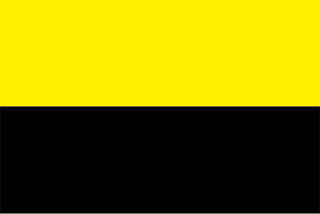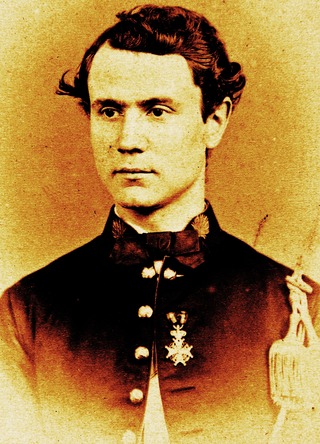
South Kalimantan is a province of Indonesia. It is the second most populous province on the island of Kalimantan, the Indonesian territory of the island of Borneo after West Kalimantan. The provincial capital was Banjarmasin until 15 February 2022 when it was legally moved 35 kms southeast to Banjarbaru. The population of South Kalimantan was recorded at just over 3.625 million people at the 2010 Census, and at 4.07 million at the 2020 Census. The official estimate as at mid 2023 was 4,221,929. One of the five Indonesian provinces in Kalimantan, it is bordered by the Makassar Strait in the east, Central Kalimantan in the west and north, the Java Sea in the south, and East Kalimantan in the northeast. The province also includes the island of Pulau Laut, located off the eastern coast of Kalimantan, as well as other smaller offshore islands. The province is divided into 11 regencies and 2 cities. South Kalimantan is the traditional homeland of the Banjar people, although some parts of East Kalimantan and Central Kalimantan are also included in this criterion. Nevertheless, South Kalimantan, especially the former capital city Banjarmasin has always been the cultural capital of Banjarese culture. Many Banjarese have migrated to other parts of Indonesia, as well as neighbouring countries such as Singapore and Malaysia. In addition, other ethnic groups also inhabit the province, such as several groups of the Dayaks, who mostly live in the interior part of the province, as well as the Javanese, who mostly migrated from Java due to the Transmigration program which dated from the Dutch colonial era. It is one of the provinces in Indonesia that has a larger population than Mongolia.

Prince Diponegoro, also known as Dipanegara, was a Javanese prince who opposed the Dutch colonial rule. The eldest son of the Yogyakarta Sultan Hamengkubuwono III, he played an important role in the Java War between 1825 and 1830. After his defeat and capture, he was exiled to Makassar, where he died at 69 years old.

The Sultanate of Mataram was the last major independent Javanese kingdom on the island of Java before it was colonised by the Dutch. It was the dominant political force radiating from the interior of Central Java from the late 16th century until the beginning of the 18th century.

Sultan Agung Adi Prabu Anyakrakusuma, commonly known as Sultan Agung, was the third Sultan of Mataram in Central Java ruling from 1613 to 1645. He was a skilled soldier who conquered neighbouring states and expanded and consolidated his kingdom to its greatest territorial and military power.

Nyi Roro Kidul is a supernatural being in Indonesian folklore. She is the Queen of the Southern Sea in Sundanese and Javanese mythology.

A floating battery is a kind of armed watercraft, often improvised or experimental, which carries heavy armament but has few other qualities as a warship.

The Sultanate of Cirebon was an Islamic sultanate in West Java founded in the 15th century. It is said to have been founded by Sunan Gunungjati, as marked by his letter proclaiming Cirebon's independence from Pajajaran in 1482, although the settlement and the polity had been established earlier, in 1445. Sunan Gunungjati also established the Sultanate of Banten. It was one of the earliest Islamic states established in Java, along with the Sultanate of Demak.

The Pontianak Kadriyah Sultanate was a Malay state that existed on the western coast of the island of Borneo from the late 18th century until its disestablishment in 1950. It was founded in 1771 by Sultan Syarif Abdurrahman Ibni Alhabib Husein bin Ahmad Alkadrie, allegedly a descendant of Husayn ibn Ali, in the area of the mouth of the triple junction of the small Kapuas River and the porcupine river which included a small area area ceded by the Sultan of Banten to the Dutch VOC. He had two political marriages in Kalimantan, the first to the princess of the Mempawah Kingdom, Utin Chandramidi, and the second in 1768 to Ratu Syahranum of the Banjar Sultanate, earning him the title Pangeran Nur Alam.

The Banjarmasin War (1859–1863) was a war of succession in the Sultanate of Banjarmasin, as well as a colonial war for the restoration of Dutch authority in the eastern and southern section of Borneo.

Sultanate of Banjar was a sultanate located in what is today the South Kalimantan province of Indonesia. For most of its history, its capital was at Banjarmasin.
Kangjeng Gusti Pangeran Adipati Arya Mangkunegara I, also known as Pangeran Sambernyawa, his birth name was Raden Mas Said, established the Puro Mangkunegaran, in Surakarta, Java Island. Thus, he was the first ruler of The Principality of Mangkunegaran.

Prince Antasari, also known by his Indonesian name Pangeran Antasari, was a sultan of Banjar and is a National Hero of Indonesia. His son Prince Hijrah is one of the leaders of The Navy.

George Frederik Willem Borel was a major general in the Netherlands, notable for his involvement in the Banjarmasin and Aceh Wars.

Tanjungpura Kingdom or Tanjompura was the name of an ancient 8th century kingdom that was located along the southwestern coast of Borneo facing the Java Sea, a region that today corresponds to the Ketapang Regency of West Kalimantan province of Indonesia. The kingdom experienced several moves of the royal capital, first located in Negeri Baru Ketapang Regency, then moved to Sukadana, since Panembahan Sorgi embraced Islam.

Pakubuwono I, uncle of Amangkurat III of Mataram was a combatant for the succession of the Mataram dynasty, both as a co-belligerent during the Trunajaya rebellion, and the First Javanese War of Succession (1704–1707).

Kottamara is a type of floating battery or fortified raft from Borneo. It is used by native Bornean in warfare, its usage rose prominently during the Banjarmasin war (1859–1906). Kotta mara is used in riverine warfare, as an armed vessel or simply a blockhouse or fortification to prevent enemy advance in the river.

Pemboewan or Pemboeang was a subdistrict of the Dutch East Indies, located in modern-day Central Kalimantan, Indonesia.

The Mempawah Kingdom also known as the Mempawah Sultanate, was an Islamic Dayak kingdom located in a territory now known as the Mempawah Regency, West Kalimantan, Indonesia. The name Mempawah is taken from the term "Mempauh", which is the name of a tree that grows in the upper reaches of the river, also known as the Mempawah River. In its development, Mempawah became known as the name of one of the kingdoms and sultanates that developed in West Borneo. The history of Mempawah is divided into two periods, namely the Dayak kingdom based on Hindu teachings and the period of Islamic influence.

Suriansyah, also known as Suryanullah or Sultan Suria Angsa and Pangeran Jaya Sutera, was the founder and first sultan of the Sultanate of Banjar who ruled from his coronation in 1526 until his death in 1540. He was probably the first Banjar ruler to embrace Islam.


















